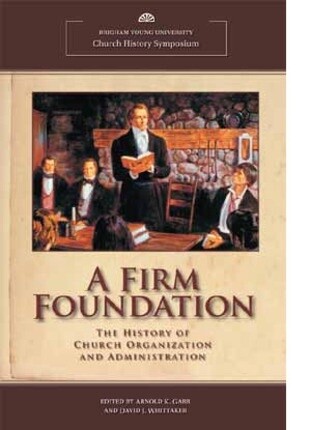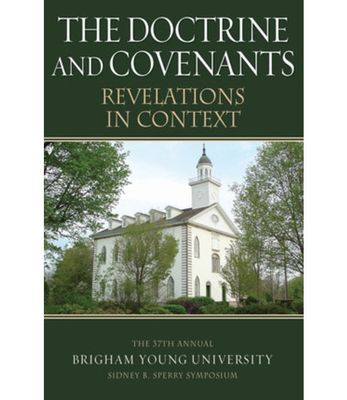A Firm Foundation
£29.99
Pre-order
Buy and save
Buy and earn £0.29 Loyalty for your next purchase
Loyalty is a discount program that lets you buy products and earn points to redeem on your next purchase. Your Loyalty balance is updated when you pay online or in-store. The Loyalty amount shown on this page can be recalculated at the checkout.
Out of stock, available for Special Order
1
Product Details
The History of Church Organization and Administration. How can a multimillion-member religious organization succeed while relying almost entirely upon a lay ministry? It is unprecedented among world religions today.The business of creating organizational and administrative structure in the Lord's work began at least as early as the time of Moses. Later, in New Testament times, the Apostle Paul described a higher level of Church organization when he wrote to the Corinthians, "God hath set some in the church, first apostles, secondarily prophets, thirdly teachers, after that miracles, then gifts of healings, helps, governments, diversities of tongues" (1 Corinthians 12:28). This organization was established by God to deliver saving ordinances and covenants and to promote order, service, learning, and the personal development of Church members.Although Joseph Smith was acquainted with the biblical record of Christ's Church, he and subsequent prophets in this dispensation required contemporary revelation to know how to proceed with the organization of the restored Church. John Taylor explained that "God has taught us how to organize His Church. Had He not taught us we should not have known anything about its organization." The Lord deals in matters of Church government, as he does in all other categories of truth and knowledge, by giving his followers "line upon line, precept upon precept" (D&C 98:12). Moreover, he provides refinements and innovations in Church organization and administration according to the needs and circumstances of the times.The Church has been built on a foundation laid down by the prophets. There is great security in this firm foundation, but there is also a living dimension to the Church's organization and administration. God's hand is always outstretched, his Spirit is ever ready, apostles and prophets continue to speak, and the destiny of his Church and people in these changing and often calamitous times is therefore secure.Some of these inspired developments in the restored Church are chronicled by the skilled historians who have contributed the chapters in this book. Author Arnold K. Garr
Save this product for later
Customer reviews
Reviews only from verified customers
No reviews yet. You can buy this product and be the first to leave a review.
A Firm Foundation
You May Also Like
Display prices in:GBP






